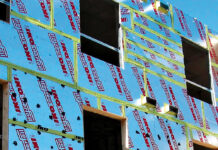Tarion’s adventure into residential condominium conversion
By Leor Margulies
Robins Appleby
Effective January 1, 2018, builders backed by Tarion will be providing new home warranties for residential condominium conversions as a result of amendments to the Condominium Act. As a result, any project whose first agreement of purchase and sale was sold to an arm’s length purchaser after January 1, 2018, will be required to adhere to the new procedures which are dealt with in detail in Tarion’s Bulletin 51.
Application
Bulletin 51 coverage will only apply to conversions from non-residential uses. Therefore, apartment buildings, hotels, boarding houses and similar residential-type buildings are not covered. The theory is that those buildings were always designed for residential use and, presumably, had the appropriate structure to support residential use. Non-residential buildings were not designed for residential occupation and, therefore, have greater potential for improper design when converting to residential use.
All of the usual one-year, two-year and seven-year warranties apply to converted buildings, except that the standard first year warranty will not apply to pre-existing elements (i.e. the existing structure).
Highlights
- Bulletin 19 reporting will apply to conversion buildings and will be expanded to cover review and comment on the required reports.
- Enrollment fees will be double for conversions.
- Reporting and security is required to be provided, completed and accepted by Tarion before any marketing or construction can take place.
Reporting
Under the Bulletin, the following three reports are required to be submitted for any conversion project at least 90 days before the earlier of commencement of marketing and construction.
Property Assessment Report: It will provide a general description and condition of the property as well as any conversions, modifications and repairs.
Capital Replacement Plan: This plan must specifically outline the pre-existing elements and their known history, contain a building assessment of its condition and the results of any testing. It will also address required repairs together with specific schedule repairs over the next 45 years plus a breakdown of the major repair schedule for the initial seven-year period to be covered by the warranty program, for both common elements and units.
Pre-Existing Elements Study: The key information to be provided in this report is the expected seven-year repair schedule and the calculation of the builder contribution to the pre-existing element fund, broken down by units and common elements, to be updated annually prior to registration of the condominium. This amount will form the basis of the security to be posted by the developer.
All reports are to be prepared and certified by a professional engineer.

Pre-Existing Elements Fund
An amount equal to the cost of the expected major capital repairs during the first seven years is to be posted prior to commencement of sales and construction with an approved arm’s length trustee. It will be updated annually and, if the amount is to be increased, the developer will be required to post additional security.
Release of Pre-Existing Elements Fund
Prior to condominium registration, the builder may seek periodic releases of the funds to cover costs based on certification and engineering reports. Post condominium registration, the fund, to the extent it remains, can be turned over to the condominium corporation with respect to common elements and to unit owners, up to $10,000 per unit for specific units that have allocated amounts. Beyond $10,000, the unit owner will have to apply and substantiate the repairs for which the owner is seeking reimbursement. There are also a series of rules to address the interplay of the pre-existing elements fund and the Tarion warranty. The warranty will kick in for pre-existing elements repairs if the appropriate procedure is followed and there is insufficient monies allocated for this repair.
Implications for New Conversions
- More significant expense to prepare reports and post security prior to marketing may deter conversions and reduce the number of potential projects.
- Pre-existing elements fund unnecessary; it could have been covered by normal construction funding and made a requirement under the Bulletin 19 reporting.
- No need to distinguish between repairs for pre-existing elements and new construction; all have to be completed for condominium registration.
- It is expected that most builders will complete most repairs identified in pre-existing elements study prior to condominium registration, rather than leaving it to the condominium to do so, where appropriate.
- Additional costs of reporting, security and enrollment fees will ultimately be passed on to the consumer to make conversion projects more expensive.
As a result, consumers will be better protected on conversion projects covered by the warranty program. The downside is that they will be more expensive and less plentiful, thereby adding to the already short supply of housing product in the GTA.

Leor Margulies is a partner at Robins Appleby Barristers + Solicitors.
http://robinsappleby.com/











